Contents:
- Primer for wallpaper
- Acrylic primer for water-based paint
- Adhesive primer
- Phenol primer
- Universal method
- Home stain remover
- Chemicals
- Steam cleaner
- Prevention
If the work failed to protect the windows, you need to know howthan to wash the primer from the glass surface. The same problem occurs if the primer is on the tile. There are compositions for priming, which can be washed off with water, and there are those for which it is problematic to remove the remover. Let's start from easy to difficult.
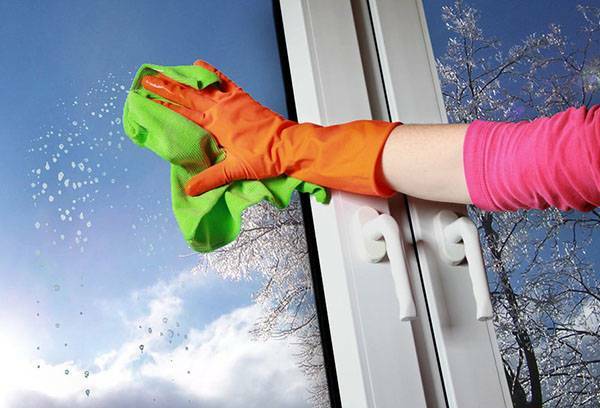
Primer for wallpaper
Often before wallpapering the wall is pre-impregnated with wallpaper glue. Such a primer is easily washed off, especially if it is fresh. It can be wiped off with a damp rag. If the glue is withered, it should not be ripped off with abrasives. It is enough to soak the stains on the glass and wait for the paste to swell. After that, it will be removed by any wet sponge.
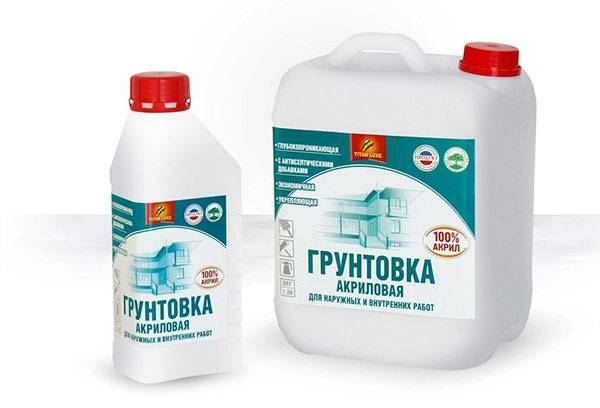
Acrylic primers for water-based paint
This kind is also easily removed from glass and tiles. The spots need to be wetted, and after a while they will be well washed without the use of chemicals. The only exception is those compounds in which the dye is added. In this case, it is necessary to wipe the pollution with White Spirit.
Advice
If the primer is very withered, it must be soaked with hot water. For floor tiles you can use boiling water.

Adhesive primers
Impregnating compositions that improve the coupling of the base and finishing materials, for example "Concrete contact", are very hard to remove after drying. In fact, they can be removed only mechanically. It is best to use a blade to clean the glasses. Holding it at an angle of 40-45 º, you need to try to pick up the edge of the ground. After removing the strip / flap repeat the procedure.
To facilitate the process, organic solvents such as P 646 can be used. There are ethers that promote swelling of the primer and loss of its adhesive properties.
Cleaning is carried out in this way:
- soak the rag with a solvent and apply to the stain;
- wait 30-60 minutes;
- remove rags - under it should form a jelly-like film;
- fake the film with a blade and remove;
- wipe the glass with a soap solution and then with clean water.
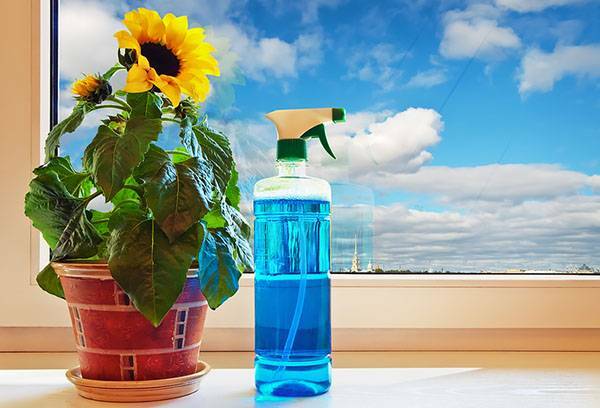
Phenol primer
For priming wood use primer based on phenol. If it hit the surface of ceramic tiles or glass and after that it took more than 17 hours, then you will have to use solvents. For removal, xylene, a solvent or a mixture of solvent with "White Spirit"( in equal proportions) is suitable.
Cleaning is carried out according to the following scheme.
- Apply a solvent to the contaminated area.
- After 2-5 minutes, wipe with an abrasive sponge.
- Repeat wetting solution and again wipe with a sponge.
- Rinse the glass with water.
To wipe off fresh dirt, it is enough to wipe it with a rag or a damp sponge.

Universal method
If the type of primer is unknown, but there is a residue, the problem of pollution is easily solved. It is enough to moisten the stains with the same soil, wait a while, and then wipe off with a rag or, if necessary, an abrasive sponge. This action is explained by the fact that there is always a solvent in the soil. However, if the time has passed too much - more than two weeks, then this method may not work either. As a rule, during this time, complete polymerization takes place, and strong remedies are required to remove stains.
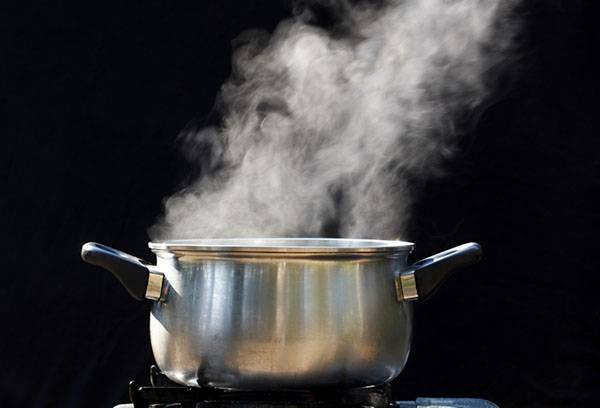
Homemade stain remover
If the primer is not left, and its type is unknown, the question of how to wash the primer is still relevant. In this case, you will have to try different methods and means.
From the handy tools you can use:
- boiling water;
- soda;
- vinegar.
Boiling water is used to clean ceramic floor tiles with a porous structure. In this case, you need to water the stain and after a few minutes wipe with a rag. Vinegar is used for glass and acid-resistant tiles. It is applied undiluted onto the dried primer, and after 10-15 minutes it is washed off. This treatment has to be repeated several times.
Soda can be used for both glass and tiles. The spot is moistened and sprinkled with soda so that a gruel is formed. A few minutes after application, you need to wipe the resulting gruel with a sponge. In this case, soda acts as an alkaline solvent, and as a mechanical abrasive.
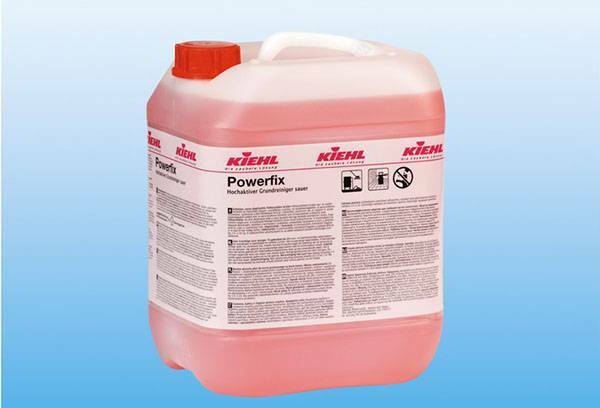
Chemicals
If none of the above did not help to get rid of primer stains, you can use "heavy artillery" - household chemicals to clean problematic contaminants. For window panes, any tool can be used, it is better to choose an alkaline based cleaner for tiles.
Cleaners list:
- Dopomat;
- Hodrupa A;
- ATLAS SZOR;
- Veroclean;
- Corvett;
Powerfix refers to acidic agents, the rest are alkaline. Corvett can be used to remove stains from ceramic granite tiles. All these products are professional and highly concentrated, therefore, before use, they must be diluted according to the instructions. To remove stains, select the "for deep cleaning" concentration. After use, the surface should be thoroughly rinsed with water.
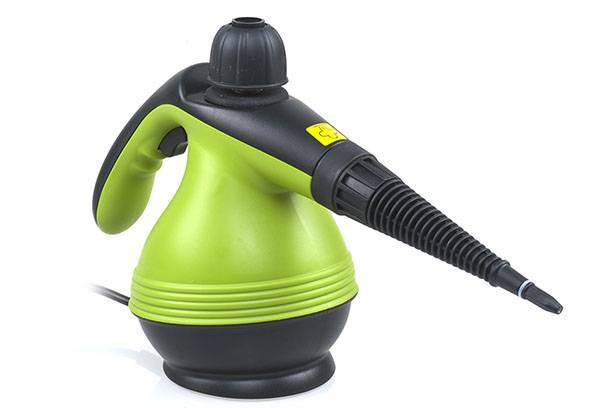
Steam Cleaner Most primer stains can be removed with a steam cleaner. It is well suited for cleaning tiles with a porous structure, but for window panes it can not be used. The glass will heat unevenly and burst. Glazed tiles can also behave unpredictably, so the use of this technique is limited to floor tiles.
The cleaning method consists of two actions that are executed simultaneously.
- Direct the jet of steam to the stain.
- Brush with hard pile to scrape off contamination.
Before using the steam cleaner, the stain can be pre-treated with a solvent. In this case, mechanical cleaning will be minimized and the surface of the tile will not suffer from excessive friction.

Prevention
The simple truth - to prevent it is easier than to eliminate it - for some reason it is well remembered only after several hours of rubbing the spot with all possible means. But, really, if you take care in advance and close the tiles and windows with a film, then you do not have to remove the soiled dirt.
You can use shrink film to protect windows. It has a minimum thickness and will not "take" sunlight. It is attached directly to the glass, and around the perimeter is fixed with a paint tape. Any water-repellent material is suitable for tile. On the floor, only dense polyethylene is used, and on top of it you need to also lay cardboard. Such simple measures will allow to carry out repairs without consequences - frozen cement on windows, traces of glue, paint or primer.



